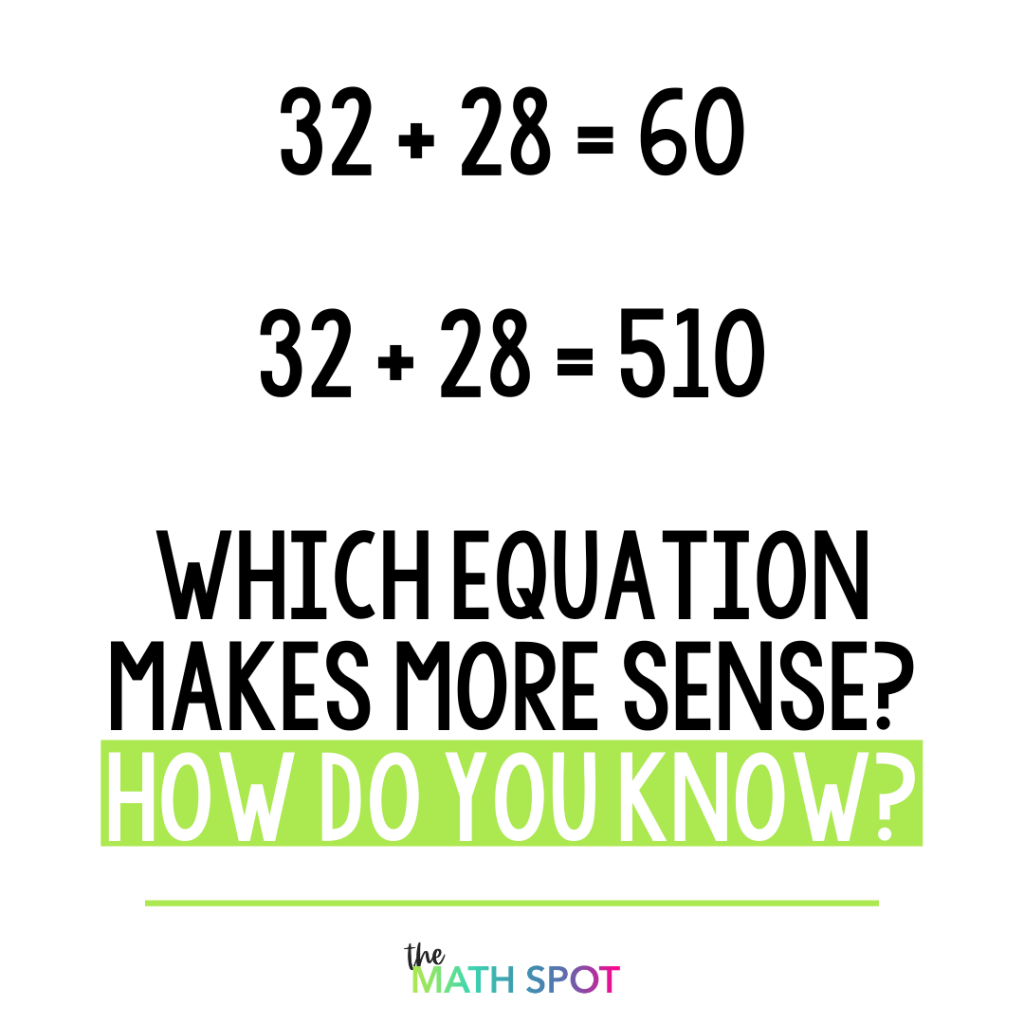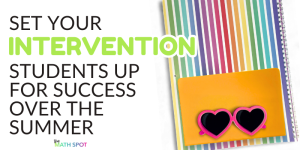Teaching addition and subtraction with regrouping is such an exciting time. It’s a benchmark skill that many kids and parents think of as the first opportunity to do “big kid math”. But before we rush into this skill, we need to be sure that our students have the foundational understandings they need to be successful!
I feel that it is important to point out that addition and subtraction with regrouping *using the standard algorithm* isn’t required until 4th grade in the Common Core Learning Standards. That being said, “strategies based on place value” begin much earlier and many curriculums begin to teach the standard algorithm as early as 2nd grade. I understand that while it may be ideal to expect the standard algorithm much later, that our youngest students are absolutely gaining exposure to this strategy and so this post is a collection of the skills that should be considered absolute non-negotiables before beginning this skill.

Addition and Subtraction With Regrouping Prerequisites
The skill of addition and subtraction with regrouping is a culmination of the understanding of addition and subtraction as operations, an understanding of place value, and the ability to think flexibly around place value and operation in order to estimate and consider the reasonableness of one’s answer.
- Understanding of Addition
- Understanding of Subtraction
- Understanding of Place Value
- Understanding of Estimation
Understanding Addition
Before your students will be able to add with regrouping they need to have a full and complete understanding of what addition means and what addition does. This may seem obvious but many students have an understanding of addition as [insert strategy here].
You may have students who see the + sign and think “That means I need to count on!”
Or students who think to themselves ” + means counting my fingers”
Or even students who have memorized individual facts but don’t truly understand that addition means that parts are being added onto or put together.
It is worth the time before beginning addition to check in with your students to be sure that they understand that addition means putting parts together so that addition with regrouping doesn’t just turn into the latest in a long list of strategies that “mean addition” to your students.
Understanding Subtraction
Subtraction lends an additional layer of complexity. Where addition conveys putting parts together subtraction conveys the inverse- taking apart- but subtraction can also be used to find the difference between two numbers.
The actions of taking away/apart and finding the difference feel VERY different to students! Using a variety of types of word problems and contexts can help your students to understand that subtraction is an operation that can fill both of these roles.
Before you begin subtraction with regrouping it is important that your students have an understanding of what subtraction does and what subtraction means or it will simply become a procedure your students use when they see the – sign.
Understanding Place Value
Understanding place value is more than being able to recite the number of tens and ones in a number. A student who has the place value understandings necessary to add and subtract with regrouping will understand, at the very least, the following:
- That the two-digits of a two-digit number represent the number of tens and ones in that number.
- How to build and represent a two-digit number using a groupable model such as linking cubes.
- How to count by 1s to 100
- How to count by 10s.
- Recognize that, for example, 5 tens = 50 quickly and fluently.
- A ten can be decomposed into 10 ones and the value of the whole number stays the same.
- 10 ones can be composed to create a ten and the value of the whole number stays the same.
It is important to note that students can learn and solidify so many understandings about place value through exploration adding and subtracting 2-digit numbers together. Invented strategies strengthen students’ understandings of addition, subtraction and place value. Moving too quickly to the standard algorithm can rob your students of this opportunity if you do not consciously build in opportunities for place value and operations exploration outside of the standard algorithm.
Understanding of Estimation
A student executing addition or subtraction with regrouping as a procedure may not stop to consider the reasonableness of their answers. Understanding estimation and having flexible thinking around addition, subtraction and place value can help your students to avoid errors.
For example, a common error made when adding 34 + 28 would be the answer 512. This total can be found by adding 3 and 2 for a total of 5 and 8 and 4 for a total of 12. A student who has some basic place value and estimation skills would recognize that 3(ish) tens plus 2(ish) tens should yield a result somewhere in the broad neighborhood of 50, not 500.
A quick and simple activity to strengthen your students place value flexibility and estimation skills would simply be to provide an equation and two possible answers and ask your students which answer makes the most sense.

Questions to Ask Yourself Before Beginning Addition and Subtraction with Regrouping
- Do my students understand what addition means?
- Do my students understand what subtraction means?
- Do my students have a solid place value foundation including:
- That the two-digits of a two-digit number represent the number of tens and ones in that number.
- How to build and represent a two-digit number using a groupable model such as linking cubes.
- How to count by 1s to 100
- How to count by 10s.
- Recognize that, for example, 5 tens = 50 quickly and fluently.
- A ten can be decomposed into 10 ones and the value of the whole number stays the same.
- 10 ones can be composed to create a ten and the value of the whole number stays the same.
- Do my students have a basic ability to estimate and determine whether their answer is reasonable?
Before you begin teaching addition and subtraction with regrouping, take a quick look through your roster and ask yourself these questions regarding your own students. What do your students already know? What interventions might you need to put in place before beginning these new skills?









